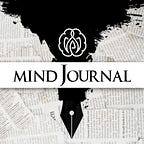How To Not Be Gullible: 8 Practical Strategies For Developing Healthy Skepticism
In a world inundated with information and potential deceit, cultivating healthy skepticism and sharpening critical thinking skills are paramount to warding off scams and false information. Gullibility, the propensity to believe without sufficient evidence, can be mitigated by comprehending its origins and employing practical strategies.
Gullibility often arises from factors such as a deficiency in critical thinking abilities, susceptibility to emotions, and a quest for simplistic solutions. The character of Forrest Gump in the movie epitomizes gullibility, underscoring the repercussions of blind trust in a multifaceted society.
To steer clear of gullibility, it’s essential to hone critical thinking skills by verifying sources, scrutinizing everything, and fact-checking information rigorously. Identifying cognitive biases like confirmation bias and availability heuristic is crucial, as is fortifying emotional resilience to facilitate more judicious decision-making. Continuous learning, seeking guidance from reliable sources, and nurturing a healthy dose of skepticism are instrumental.
Enhancing information literacy, grasping statistical literacy, and nurturing a critical mindset are pivotal for adeptly navigating today’s intricate landscape. Embracing skeptical inquiry, honing problem-solving abilities, fostering intellectual humility, and nurturing intellectual curiosity all contribute to warding off gullibility.
In summary, mastering the art of skepticism involves a deliberate effort to embrace doubt, challenge assumptions, and make well-informed decisions. By incorporating these tactics, individuals can traverse the vast expanse of information with discernment and intellectual enrichment. Remember, the focus on “how to not be gullible” underscores the necessity of actively embracing these principles to shield oneself from misinformation and deceit.
